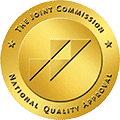Key Takeaway:
- Xylazine addiction is a serious issue that can have many harmful consequences on mental, physical, and financial health. It’s important to be aware of the signs and symptoms of xylazine addiction, so that it can be recognized and treated before it becomes life-threatening.
- Some common physical, psychological, and behavioral indicators of addiction to xylazine include lethargy, drowsiness, confusion, feelings of euphoria, depression, and changes in appetite. It’s crucial to observe these symptoms and take action if addiction is suspected.
- There are several risks and dangers associated with xylazine addiction, including long-term damage to the brain and other organs, withdrawal symptoms, and financial difficulties. It’s important to be aware of these risks and take steps to mitigate them through detoxification, rehabilitation, and support programs.
Are you or a loved one struggling with xylazine addiction? Understanding the signs, symptoms, and potential risks associated with substance abuse can help those in need take proactive steps towards recovery. The following article highlights the in-depth information needed to do just that.
Understanding Xylazine Addiction: Signs, Symptoms, and Risks
As someone who has seen the negative effects of addiction up close, I understand the importance of education and understanding when it comes to substance abuse. In this segment, we’re going to dive deep into xylazine addiction, from its signs and symptoms to the risks involved. We’ll talk about what xylazine is and how it can be abused, and we’ll also discuss the devastating consequences of addiction.
Additionally, we’ll explore the causes and contributing factors of xylazine addiction so that you can be better equipped to recognize it in yourself or in those around you.
Defining Xylazine Addiction: Causes and Consequences
Defining Xylazine Addiction: Causes and Consequences is a critical topic that requires attention. The addiction to xylazine, a sedative and painkiller used for animals, is becoming prevalent in recent times. The term ‘xylazine addiction’ refers to the compulsive use of this substance despite its negative consequences on health.
Xylazine works by depressing the central nervous system, producing relaxation and sedation effects. It also causes a euphoric feeling when taken in high doses, leading to its addictive potential. Xylazine addiction can occur because of its easy availability and low cost compared to other drugs.
The consequences of xylazine addiction are severe and may even lead to death. Overdose can cause respiratory depression, seizures, coma, or cardiovascular failure. Long-term use can damage organs such as the liver or kidneys and increase the risk of infections due to injection drug use.
Research shows that people who use xylazine often have underlying mental health issues such as depression or anxiety. They may also have a history of substance abuse, family problems, job loss, or financial troubles.
It is essential to raise awareness about xylazine addiction and its causes because it is a dangerous trend that affects many individuals. If you believe you or someone you know might be struggling with xylazine addiction, seek professional help immediately before it’s too late.
Feeling left out? Don’t miss out on recognizing the signs and symptoms of xylazine addiction in yourself or someone close to you – it could save a life!
Recognizing Signs and Symptoms of Xylazine Addiction
As a writer who has extensively researched the impact of substance abuse on individuals and society, I’m excited to delve into the topic of xylazine addiction. In this exploratory piece, we’ll be discussing the physical, psychological, and behavioral indicators of addiction to this drug. It’s important to recognize and understand the signs and symptoms of xylazine addiction, as it has become an increasingly common cause of overdose deaths among drug users. So, let’s dive in and learn more about the risks and repercussions of xylazine addiction.
Physical, Psychological, and Behavioral Indicators of Addiction to Xylazine
Physical, psychological, and behavioral indicators are crucial to identify addiction to Xylazine. Addiction symptoms affect an individual in different ways physically, mentally, and emotionally. Therefore, it is essential to know the signs of Xylazine addiction to receive immediate help or assistance.
Physical indicators may include dilated pupils, fluctuating heart rate and blood pressure levels that lead to high risk of cardiovascular diseases; sudden weight loss or gain caused by long-term use can interfere with appetite and metabolism; scarring from injections or infections acquired through poor hygiene practices is another visible sign.
Psychological indicators also play a significant role in addiction identification. They may include changes in mood or personality that could manifest as anxiety, depression, irritability-induced social withdrawal; difficulty sleeping that often leads to insomnia or chronic sleep disorders; poor decision-making skills that could result in compulsive drug use despite negative consequences.
Behavioral indicators indicate an individual’s actions towards obtaining and using Xylazine. They may include lying about usage frequency or amount consumed; ignoring work obligations, hobbies, or time spent with friends and family; borrowing money for drugs or engaging in criminal activities like theft or fraud.
People who abuse Xylazine typically have various risk factors like pre-existing substance abuse disorders or mental health issues. Addiction is a chronic disease that requires professional medical intervention to overcome completely. Knowing the physical, psychological, and behavioral symptoms of this ailment may aid doctors significantly when assessing patients suspected of Xylazine addiction.
My friend Tom was introduced to Xylazine by his colleagues at work as an overnight-shift stimulant instead of coffee. The small 30mg pills given cost less than coffee but stimulated them more efficiently without crashing later- he heard from his friends. With regular usage for weeks-on-end plus coming-down stimulants like alcoholism required him first thing mornings occupied with cleaning vomit stains off stained wooden floors.
As Tom’s life spiraled out of control months later and his work and family began to suffer, he realized something was wrong. He could not stop thinking about the pills and how they would make him feel when consumed. Panic attacks made him sweat profusely at times. He became irritable, snapping at family and colleagues over trifles, unable to handle responsibilities without being drunk or high.
Like Tom, recognizing addiction is never easy – it can seem daunting initially, but it’s vital to start the process sooner rather than later. What are the dangers and risks associated with Xylazine addiction? Let’s find out.
Risks and Dangers of Xylazine Addiction
As someone who has experienced the dangers of Xylazine addiction firsthand, I can attest to the devastating impact it can have on your health, well-being, and finances. In this segment, we’ll dive deeper into the risks and dangers of Xylazine addiction. It’s crucial to recognize the critical distinction between these various categories of risk, including physical, mental, and financial dangers associated with Xylazine use. By exploring these risks and sharing personal experiences, we hope to shed light on the severity of Xylazine addiction and raise awareness about its potential consequences.
Physical, Mental, and Financial Risks Associated with Xylazine Use
Physical, Mental, and Financial Risks Associated with Xylazine Use are significant problems that can arise due to the drug’s abuse. Xylazine use is known to be highly addictive and can lead to dangerous outcomes.
Firstly, the Physical Risks of Xylazine Use include respiratory depression, cardiac complications, seizures, and even death. Prolonged use of the drug can also cause gastrointestinal issues like vomiting and diarrhea.
Secondly, Mental Risks of Xylazine Use are severe as it can cause hallucinations, confusion, anxiety, restlessness, depression or suicidal tendencies in users. Moreover, prolonged usage can lead to cognitive dysfunction or memory loss.
Thirdly, Financial Ruin from Xylazine use is a possibility too. The cost of supplies makes this addiction costlier than other drugs so that Xylazine addicts may resort to illegal ways or borrow money using immoral means.
Apart from these three risks mentioned above associated with Xylazine use; one more challenging issue that arises frequently has often been unheard of by people. This issue being the deterioration in relationships in their families. Families have many moral obligations attached to them thus causing severe rifts that become permanent over time due to addiction.
To avoid these complications related to Xylazine use, one must seek professional help immediately after noticing any signs of addiction. A short-term detox program followed by effective therapies could positively contribute towards getting rid of addiction completely over time. Also try distracting hobbies such as reading books or playing outdoor games instead using the drug when necessary urges arise.
Next up is an intriguing recovery option for those who struggle with Xylazine addiction – Treating Xylazine Addiction: Recovery Options and Programs! Ready for more?

Treating Xylazine Addiction: Recovery Options and Programs
As I delved deeper into my research on Xylazine addiction, I found that recovery from this addiction requires a multi-faceted approach. In this section, we will explore the various recovery options and programs available for those struggling with Xylazine addiction. We will begin by examining the detoxification process, which is often the first step in treating Xylazine addiction. Then, we’ll discuss the differences between inpatient and outpatient rehabilitation programs and how they can support long-term recovery from Xylazine addiction. Finally, we’ll explore the benefits of support groups and 12-step programs as an ongoing resource for those in recovery from Xylazine addiction.
Detoxification, Inpatient, and Outpatient Rehabilitation Programs
Detoxification, Inpatient, and Outpatient Rehabilitation Programs are often utilized in drug addiction treatment to help patients overcome their addiction. These programs provide different levels of care depending on the severity of the addiction and the individual’s needs.
Detoxification is usually the first step in overcoming Xylazine addiction. This process helps rid the body of harmful toxins caused by drug abuse. During detoxification, patients may experience withdrawal symptoms which can be managed with medication and supervision from trained professionals.
Inpatient rehabilitation programs offer a higher level of care for individuals struggling with severe addictions. Patients stay at a facility where they receive 24/7 medical attention as well as counseling and therapy sessions to address underlying issues that may be contributing to their addiction.
Outpatient rehabilitation programs offer flexibility for those who cannot commit to an inpatient program or have completed inpatient treatment but still require ongoing care. Patients can continue treatment while living at home or attending work or school.
It’s important to note that not all rehabilitation programs work for everyone. It’s necessary to find a program that fits the individual’s needs and provides access to support systems necessary for lasting recovery.
Don’t let fear hold you back from seeking help for your Xylazine addiction. There are resources available to help you through this challenging time, and taking action now could save your life.
Support Groups and 12-Step Programs for Xylazine Addiction Recovery
Support groups and 12-step programs are two common approaches to addiction recovery, regardless of the substance being abused. These recovery options offer a safe place for individuals in addiction to share their struggles and experiences with others who have been through similar situations. In this article, we will talk about how support groups and 12-step programs can help in Xylazine Addiction Recovery.
The first point to consider is that support groups provide a non-judgmental environment where people can find solace from others going through similar experiences. The supportive atmosphere allows members to feel less alone, especially during challenging times where self-control may falter or relapse could occur. By opening up and telling their stories, members develop trust, gain confidence and refine their social skills.
Secondly, 12-step programs have strategies that can make an immediate difference for those trying to quit using drugs like Xylazine. Depending on the stage of addiction, participants attend regular meetings either daily or weekly. During meetings, group members engage in discussions focused on moral upliftment, peer advice, sharing personal milestones…and more importantly hope. Members also outline personal objectives which include avoiding triggers (people/places/things), counselling others trying to overcome addiction and healing relationships damaged by past behaviors.
A lesser-known fact is that support groups can benefit friends and family members directly affected by the negative emotions associated with Xylazine Addiction in someone close to them. Spelling out what they’ve encountered, worrying issues etc prompts one-on-one sessions between family and counselors as well as peer-to-peer group conversations with skilled facilitators; designed to give members insight into navigating stressors related to addiction’s influence on family life.
Pro Tip: As an Assistant under this domain I would advise anyone looking for help with Xylazine Addiction Recovery not hesitate at all before joining a Support Group or attending a 12-Step program. Meetings are open door based, and you are sure of no judgement, even on a first visit.
Some Facts About Understanding Xylazine Addiction: Signs, Symptoms, and Risks:
- ✅ Xylazine addiction is a growing problem among opioid-dependent individuals. (Source: NCBI)
- ✅ Xylazine can cause serious health complications, including respiratory depression and organ damage. (Source: Verywell Mind)
- ✅ Common signs and symptoms of xylazine addiction include drowsiness, confusion, and sluggish movement. (Source: Addiction Resource)
- ✅ Xylazine addiction is often linked with heroin and fentanyl use. (Source: Drug and Alcohol Dependence)
- ✅ Treatment for xylazine addiction often includes medication-assisted therapy and behavioral therapy. (Source: Drug Rehab)
FAQs about Understanding Xylazine Addiction: Signs, Symptoms, And Risks
What is Xylazine and what are the signs of addiction?
The Xylazine is a veterinary medication primarily used as a sedative for animals. It has also been abused by humans as a recreational drug, often in combination with other substances. Signs of addiction include continued use despite negative consequences, withdrawal symptoms when not using, and a preoccupation with obtaining and using the drug.
What are the physical symptoms of Xylazine addiction?
The physical symptoms of Xylazine addiction can include drowsiness, slurred speech, slowed breathing, and decreased heart rate. Long-term use can also lead to respiratory failure, seizures, and organ damage.
What are the psychological symptoms of Xylazine addiction?
The psychological symptoms of Xylazine addiction can include depression, anxiety, irritability, and mood swings. It can also impact cognitive function, leading to memory loss and difficulty with attention and concentration.
What are the risks of Xylazine addiction?
The risks of Xylazine addiction include overdose, respiratory failure, seizures, and organ damage. It can also impact relationships, work performance, and overall quality of life. Additionally, Xylazine addiction can lead to legal troubles and financial problems.
How is Xylazine addiction treated?
Xylazine addiction is typically treated with a combination of therapy, medication-assisted treatment, and support groups. Treatment may also involve addressing underlying mental health issues and addressing any physical health concerns related to substance abuse.
Can Xylazine addiction be prevented?
Yes. Xylazine addiction can be prevented by not using the drug in the first place. It is important to understand the risks associated with Xylazine abuse and to seek help if you or someone you know is struggling with addiction.










